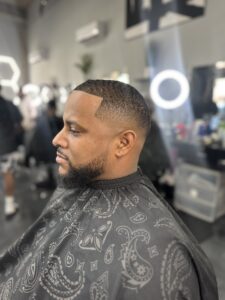Introduction: Glamour in the Face of Adversity
The 1930s were a decade of striking contrasts—while the world faced the economic challenges of the Great Depression and political unrest loomed, fashion blossomed into one of its most graceful and influential forms. 1930s fashion is remembered not just for its elegance and sophistication, but for the way it redefined femininity, structure, and detail in clothing. From the bias-cut gowns worn by silver-screen sirens to the day dresses that balanced style with practicality, this decade left an indelible mark on the fashion world. Even today, many elements of 1930s fashion continue to inspire modern designers and fashion enthusiasts alike.
The Historical Context of 1930s Fashion
The Impact of the Great Depression
Following the excess of the 1920s, the 1930s ushered in a more reserved and practical approach to fashion. The stock market crash of 1929 brought financial constraints, forcing designers and consumers alike to adapt. Mass production became more common, and garments needed to be durable as well as stylish. Despite economic hardship, people still craved beauty and glamour—something fashion delivered through clever tailoring, flattering cuts, and refined fabrics.
Hollywood’s Golden Influence
Cinema played a crucial role in shaping 1930s fashion. Stars like Jean Harlow, Marlene Dietrich, and Greta Garbo became international style icons, gracing screens with elegant evening wear, sleek trousers, and fur-trimmed coats. Designers such as Edith Head and Adrian helped translate Hollywood glamour into aspirational styles that women around the world sought to emulate.
Defining Characteristics of 1930s Fashion
The Silhouette: Soft, Feminine and Flowing
One of the most recognisable elements of 1930s fashion is the silhouette. The era moved away from the boxy, boyish shapes of the 1920s flapper style and embraced curves once again. Dresses were designed to drape over the body, thanks largely to the widespread use of the bias cut—a technique that allowed fabric to cling and flow beautifully. This gave garments a fluid movement and enhanced the natural shape of the body without the need for rigid corsets.
Daywear: Function Meets Fashion
Practicality became paramount in daywear. Women wore calf-length dresses with defined waists, soft shoulders, and tailored bodices. Patterns such as florals, plaids, and polka dots were common, offering cheerful details in otherwise conservative ensembles. Puffed sleeves and peplum details also became popular, adding volume and structure in subtle ways.
Eveningwear: Glamour on Display
In stark contrast to the modesty of daywear, evening fashion in the 1930s was dripping with glamour. Full-length gowns made of silk, satin, or velvet often featured backless designs, dramatic necklines, and artful draping. Sequins and beaded embellishments were used to catch the light, further enhancing the allure of each piece.
Accessories and Styling in 1930s Fashion
Hats, Gloves, and the Perfect Handbag
Accessories were essential to completing a 1930s look. Cloche hats slowly gave way to more structured styles with brims and decorative detailing. Gloves, worn both during the day and at formal events, added a touch of refinement. Handbags were smaller and more structured than in previous decades, typically designed to complement the overall outfit rather than dominate it.
Footwear and Hosiery
Shoes in the 1930s combined style with comfort. T-bar and Mary Jane heels with modest heights were popular choices. They often featured cut-outs or perforations for added interest. Hosiery became more sheer and sophisticated, with back-seam stockings adding elegance to any ensemble.
Menswear in the 1930s
While the focus of 1930s fashion is often on women’s wear, menswear also experienced its own style evolution. Wide-leg trousers, double-breasted suits, and fedoras defined the decade. Tailoring was paramount, with clean lines and broad shoulders giving men a more structured and confident appearance. Eveningwear for men included tuxedos with satin lapels and bow ties, a standard that remains timeless even today.
Influence on Modern Fashion
Designers Who Draw from the 1930s
Contemporary fashion often borrows elements from the past, and many designers continue to be inspired by 1930s fashion. Names like John Galliano, Jenny Packham, and Ralph Lauren have incorporated bias-cut gowns, vintage prints, and romantic silhouettes into their collections. The resurgence of tea dresses, puff sleeves, and belted waists in modern high street fashion is a direct nod to the aesthetics of this graceful decade.
Vintage Appeal and Sustainable Fashion
In an age where sustainability is becoming increasingly important, vintage clothing from the 1930s is highly prized. These garments were made with quality craftsmanship and timeless design in mind. Today, fashion lovers seek out original pieces from this era or look for modern reproductions that capture the spirit of the time while aligning with ethical fashion values.
The Role of Women’s Fashion in the 1930s
More Than Just Clothing
Women’s fashion in the 1940s was undoubtedly shaped by the events of World War II, but it was in the 1930s that the foundation for modern feminine style was firmly laid. The shift from flapper frivolity to elegant refinement reflected women’s changing roles and identities. Whether attending a dance, going to work, or managing the home, fashion became a form of self-expression and resilience.
Conclusion: Why 1930s Fashion Still Matters
1930s fashion holds a special place in the style history books—not just for its aesthetic beauty, but for the cultural and emotional stories stitched into each piece. It was an era where creativity thrived in the face of constraint, where elegance triumphed over austerity, and where the foundation of modern style was set. From its flowing silhouettes to its clever tailoring, 1930s fashion continues to influence designers and captivate vintage enthusiasts around the world. Whether you’re drawn to its classic cuts or its enduring glamour, this decade reminds us that fashion is more than what we wear—it’s a reflection of who we are and how we rise through the times.
FAQ: 1930s Fashion
1. What were the most popular fabrics used in 1930s fashion?
Common fabrics included silk, satin, rayon, velvet, and wool. Silk and satin were especially favoured for eveningwear due to their luxurious sheen and fluid drape, while rayon offered a more affordable yet stylish option for everyday dresses.
2. How did the Great Depression affect 1930s fashion?
The Great Depression led to more conservative and practical clothing choices. Extravagance was toned down, but this restraint led to creative innovations such as the bias cut and more streamlined silhouettes. It also encouraged mass production and home sewing.
3. What was the typical women’s silhouette during the 1930s?
The ideal silhouette was soft, elongated, and feminine. Clothes were designed to follow the natural curves of the body, often enhanced by the bias cut. Waists were defined, shoulders were modestly padded, and hemlines typically reached mid-calf.
4. Are there modern brands influenced by 1930s fashion?
Yes, many contemporary designers draw inspiration from 1930s fashion. Brands like Ghost, The Vampire’s Wife, and even high street retailers such as & Other Stories and Zara have incorporated vintage-inspired pieces that reflect the glamour and elegance of this era.
5. How can I incorporate 1930s fashion into my modern wardrobe?
Start with key elements like a bias-cut dress, a belted waist, or a vintage-inspired blouse. Pair these with contemporary accessories or mix vintage and modern pieces to create a balanced look. Shopping at vintage stores or choosing ethically made reproductions is a great way to honour the era’s timeless style.









